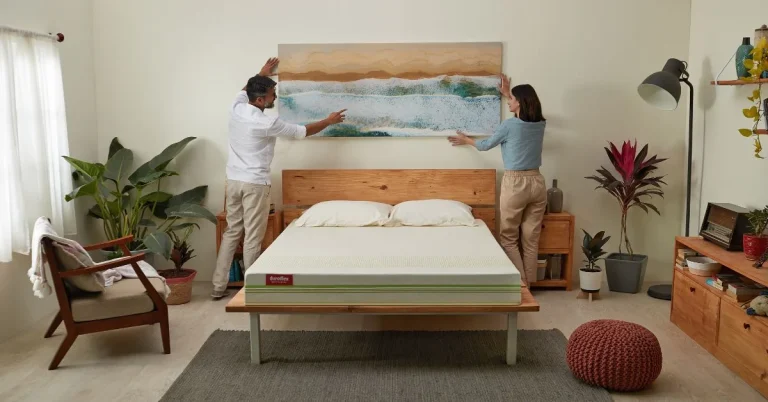Protecting Your Sanctuary: Unveiling the Hazards Lurking in Your Home

Table of Contents
Home is where the heart is, but it’s also where potential hazards may be quietly lurking, threatening the safety and well-being of you and your loved ones. From unseen dangers to more obvious threats, it’s crucial to be aware of the hazards that could compromise the sanctity of your living space.
In this comprehensive blog, we’ll explore various potential risks, including structural issues, environmental concerns, and the often-overlooked menace of pests.
Structural Hazards
1. Foundation Problems: The foundations are the backbone of your home, and any issues with it can lead to serious consequences. Cracks, settling, or shifting in the foundations may compromise the structural integrity, resulting in potential safety hazards. Regular inspections by professionals can help to identify and address foundation issues before they escalate.
2. Faulty Wiring: Electrical issues pose a significant threat to home safety. Faulty wiring can lead to electrical fires, electrocution, or damage to appliances. Ensure that your home’s wiring is up to standard and have it inspected periodically, especially in older homes where outdated systems may be more prevalent.
3. Leaky Roof: A leaky roof can lead to water damage, mould growth, and compromised structural integrity. Regular roof inspections and timely repairs are essential to prevent such issues. Addressing leaks promptly can save you from more extensive and costly repairs further down the line.
Environmental Hazards
1. Mould and Mildew: Moisture is a breeding ground for mould and mildew, which can lead to respiratory issues and other health problems. Ensure there’s proper ventilation in bathrooms, kitchens, and basements. Address any water leaks promptly and invest in a dehumidifier if necessary.
2. Radon Gas: Radon is a colourless and odourless gas that can seep into homes, especially those with basements. Prolonged exposure to radon increases the risk of lung cancer. Radon testing kits are available, and professional remediation can mitigate the risks if high levels are detected.
3. Lead Paint: Homes built before 1978 may have lead-based paint, which poses health risks, especially to children. If your home contains lead paint, consider professional removal or encapsulation to prevent exposure.
4. Carbon Monoxide: This colourless, odourless gas is produced by appliances like gas furnaces and water heaters. Install carbon monoxide detectors throughout your home to ensure early detection of any leaks.
Pest Hazards
1. Termites: These silent destroyers can cause extensive damage to wooden structures, including the frame of your home. Regular termite inspections and, if necessary, professional extermination can prevent costly repairs.
2. Rodents and Insects: Beyond being a nuisance, rodents and insects can transmit diseases and cause damage to your home. Seal any cracks or openings, keep food stored securely, and consider professional pest control services if infestations persist.
3. Bedbugs: These tiny pests can infest mattresses and furniture, leading to itchy bites and potential allergic reactions. Regularly inspect your bedding and furniture and seek professional help if a bedbug infestation is suspected.
4. Rats: Rats can infiltrate homes, wreaking havoc on both property and peace of mind. These cunning rodents pose a threat not only through their gnawing tendencies, which can damage structures and belongings, but also by transmitting diseases through their droppings and urine. Known for their adaptability, rats can squeeze through surprisingly small openings, making it imperative to seal any potential entry points.
Swift action is crucial to prevent a minor infestation from turning into a full-blown problem, and professional pest control may be necessary to effectively address and eradicate these unwanted guests. For effective rat pest control London, consider seeking professional assistance to promptly address and eradicate these unwanted rodents.
Top of Form
5. Cockroaches: Cockroaches are not only unsightly but can also carry pathogens that cause diseases. They thrive in dark and damp areas, so keeping your home clean and dry is crucial in preventing infestations. Seal cracks and crevices, eliminate food sources, and consider professional pest control measures if necessary.
6. Mosquitoes: Besides being irritating, mosquitoes can transmit serious diseases like West Nile virus and Zika virus. To reduce the risk of mosquito-borne illnesses, eliminate standing water around your property, use mosquito nets or screens, and consider mosquito-repelling plants.
7. Wildlife Intrusions: Depending on your location, wildlife such as raccoons, squirrels, or bats may find their way into your home. They can cause damage to the structure and pose health risks. Safely remove any wildlife that has taken up residence in your home and take preventive measures to keep them out.
Structural Hazards
1. Aging Infrastructure: Over time, homes age and may require updates to keep pace with modern safety standards. Aging infrastructure, such as outdated plumbing or worn-out roofing materials, can lead to leaks, water damage, and potential collapses. Regular maintenance and occasional upgrades can help to address these concerns and ensure the longevity of your home.
2. Cracked Walls and Ceilings: Cracks in walls or ceilings may seem superficial, but they can indicate underlying structural issues. These fissures may result from settling, foundation problems, or water damage. Ignoring them could lead to more significant problems, making it crucial to identify and address the root causes promptly.
Environmental Hazards
1. Asbestos: Asbestos is found in many older homes, as it was once a popular building material due to its fire-resistant properties. However, it’s now known to cause serious health issues, including lung cancer and mesothelioma. If your home was constructed before the 1980s, it’s advisable to have it inspected for asbestos, and if it’s found, hire professionals for to safely remove it.
2. Air Quality: Indoor air quality is often overlooked but can have a profound impact on your health. Common pollutants include volatile organic compounds (VOCs) from household products, dust mites, pet dander, and mould spores. Invest in air purifiers, ensure proper ventilation, and maintain a clean living environment to minimize respiratory issues.
In safeguarding your home, a comprehensive approach is essential. Regular inspections, proactive maintenance, and an awareness of potential hazards can make a significant contribution to the safety and longevity of your living space. Remember that prevention is often more manageable and cost-effective than dealing with the aftermath of a hazard. By staying informed and taking action, you can transform your home into a resilient and secure haven for you and your family.






